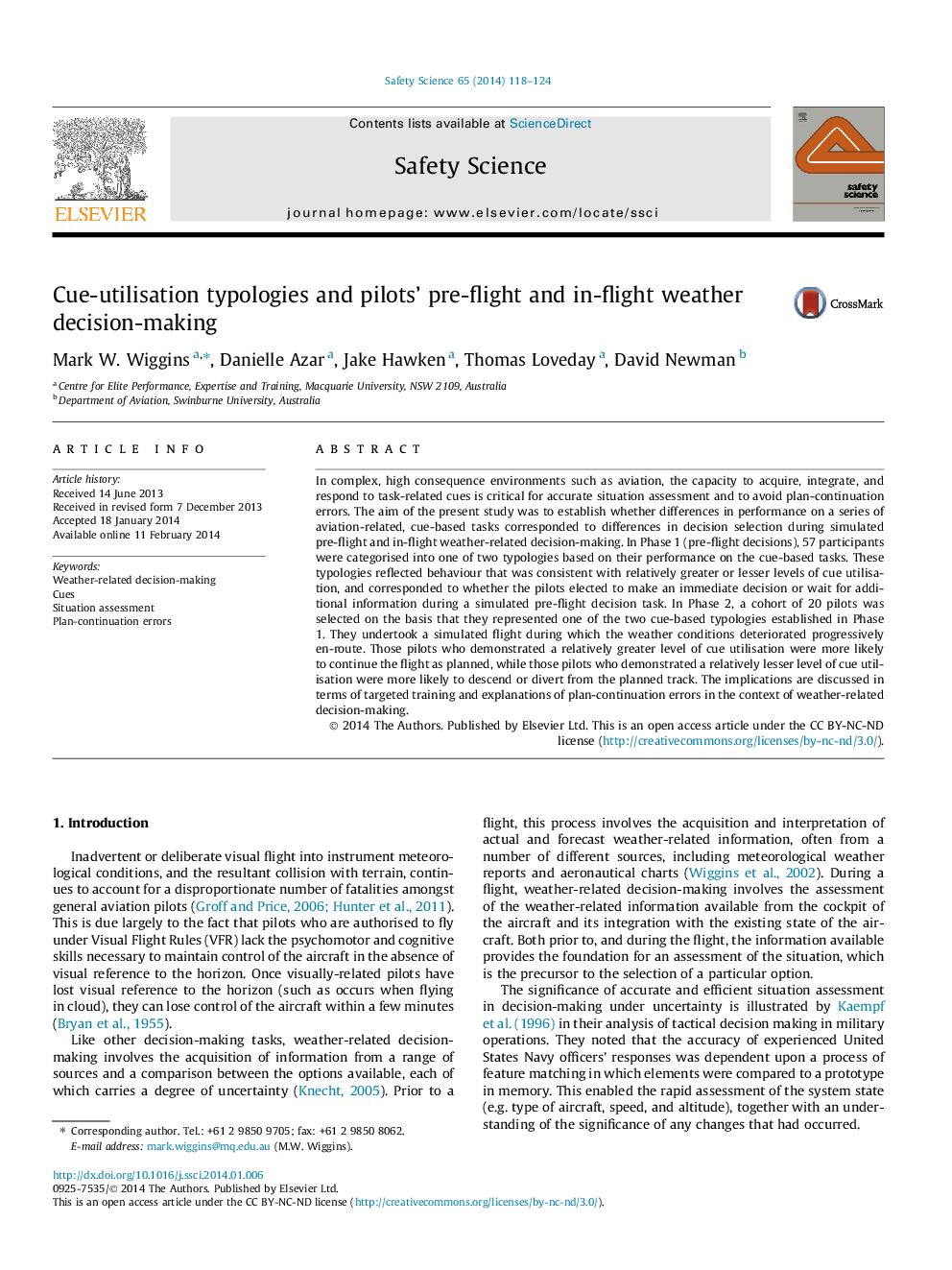| Article ID | Journal | Published Year | Pages | File Type |
|---|---|---|---|---|
| 6976338 | Safety Science | 2014 | 7 Pages |
Abstract
In complex, high consequence environments such as aviation, the capacity to acquire, integrate, and respond to task-related cues is critical for accurate situation assessment and to avoid plan-continuation errors. The aim of the present study was to establish whether differences in performance on a series of aviation-related, cue-based tasks corresponded to differences in decision selection during simulated pre-flight and in-flight weather-related decision-making. In Phase 1 (pre-flight decisions), 57 participants were categorised into one of two typologies based on their performance on the cue-based tasks. These typologies reflected behaviour that was consistent with relatively greater or lesser levels of cue utilisation, and corresponded to whether the pilots elected to make an immediate decision or wait for additional information during a simulated pre-flight decision task. In Phase 2, a cohort of 20 pilots was selected on the basis that they represented one of the two cue-based typologies established in Phase 1. They undertook a simulated flight during which the weather conditions deteriorated progressively en-route. Those pilots who demonstrated a relatively greater level of cue utilisation were more likely to continue the flight as planned, while those pilots who demonstrated a relatively lesser level of cue utilisation were more likely to descend or divert from the planned track. The implications are discussed in terms of targeted training and explanations of plan-continuation errors in the context of weather-related decision-making.
Keywords
Related Topics
Physical Sciences and Engineering
Chemical Engineering
Chemical Health and Safety
Authors
Mark W. Wiggins, Danielle Azar, Jake Hawken, Thomas Loveday, David Newman,
